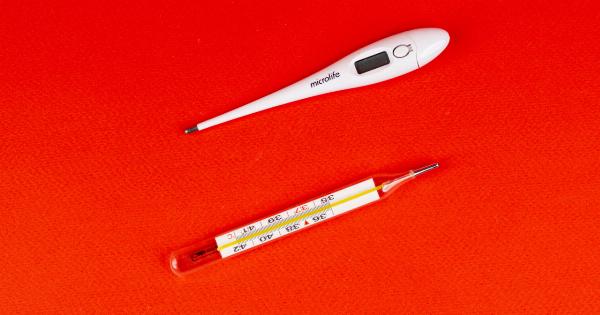As much as we love the holiday season and the tradition of decorating our homes with Christmas trees, it’s important to be aware of potential health hazards that could be lurking in your festive foliage.
“Christmas Tree Syndrome” is a term used to describe a range of respiratory issues that can be caused by your beloved holiday centerpiece, from asthma attacks to allergic reactions.
Here are 30 ways you can defend yourself and your loved ones against “Christmas Tree Syndrome” this holiday season:.
1. Choose a Fresh Tree
The fresher the tree, the less likely it is to release harmful spores and allergens into the air. Look for trees that have been recently harvested and have a strong, fresh scent.
2. Shake Your Tree
Before bringing your tree indoors, give it a good shake to dislodge any loose debris or dead needles. This will help prevent the release of allergens into the air.
3. Wash Your Hands
Handling a Christmas tree can leave your hands covered in allergens and irritants. Be sure to wash your hands thoroughly after touching your tree or handling any decorations.
4. Wear Gloves
If you have sensitive skin or a history of allergies, consider wearing gloves when handling your Christmas tree or decorating it with ornaments.
5. Vacuum Regularly
Keep your home free of dust and debris by vacuuming regularly, especially near your Christmas tree and other decorations.
6. Use a HEPA Filter
A high-efficiency particulate air (HEPA) filter can help trap airborne allergens and improve the air quality in your home. Consider using one in the same room as your Christmas tree.
7. Keep Your Tree Hydrated
A well-hydrated tree is less likely to shed needles and release harmful spores into the air. Be sure to check your tree’s water supply regularly and keep it topped up.
8. Avoid Synthetic Trees
If you have a history of allergies or respiratory issues, consider avoiding synthetic Christmas trees, as they can be made from materials that release harmful chemicals into the air.
9. Use Natural Decorations
Instead of decorating your tree with synthetic materials, consider using natural decorations like pinecones, holly, and dried fruit.
10. Use LED Lights
LED lights are more energy-efficient and emit less heat than traditional incandescent bulbs, making them a safer and more eco-friendly choice for your Christmas tree.
11. Keep Your Tree Away from Heat Sources
Avoid placing your Christmas tree near heaters, fireplaces, or other heat sources, as this can cause it to dry out and release more allergens into the air.
12. Open Windows for Ventilation
If weather permits, open windows and doors to allow fresh air to circulate and prevent the buildup of allergens in your home.
13. Clean Your Tree Stand
The base of your Christmas tree can be a breeding ground for mold and other allergens. Be sure to clean your tree stand thoroughly before inserting your tree.
14. Remove Dead Branches
Before bringing your tree indoors, trim any dead branches or damaged areas to prevent the release of allergens into the air.
15. Keep Pets Away from Your Tree
Pets can shed hair and dander near your Christmas tree, adding to the buildup of allergens in your home. Consider keeping your pets away from your tree or using a pet gate to keep them at a safe distance.
16. Use a Tree Skirt
A tree skirt can help contain allergens and prevent them from spreading throughout your home.
17. Avoid Damaged Trees
If your Christmas tree shows signs of damage or disease, avoid bringing it into your home, as this can increase your risk of exposure to harmful allergens and irritants.
18. Use Protective Goggles
If you’re trimming your Christmas tree or handling other decorations, consider wearing protective goggles to prevent irritants and allergens from getting into your eyes.
19. Take Breaks
If you’re decorating for an extended period of time, take frequent breaks to give your body a chance to rest and recover.
20. Avoid Artificial Snow
Artificial snow sprays can release harmful chemicals and irritants into the air. Consider using natural decorations instead.
21. Don’t Burn Your Tree
Burning your Christmas tree can produce harmful smoke and create a fire hazard. Be sure to dispose of your tree safely and according to local regulations.
22. Use an Air Purifier
An air purifier can help remove allergens and irritants from the air in your home, improving your overall air quality and reducing the risk of respiratory issues.
23. Consider a Different Tree
If you have a history of Christmas Tree Syndrome or other respiratory issues, consider choosing a different type of tree, such as a potted tree, or using alternative decorations.
24. See Your Doctor
If you experience respiratory issues or allergic reactions during the holiday season, it’s important to see your doctor for an accurate diagnosis and treatment plan.
25. Use a Face Mask
If you have to spend extended periods of time near your Christmas tree, consider wearing a face mask to filter out irritants and allergens.
26. Keep Your Home Clean
A clean home is less likely to harbor harmful allergens and irritants. Be sure to regularly clean your home, especially areas near your Christmas tree and other decorations.
27. Keep Your Tree Cool
Hot temperatures can cause your tree to dry out and release more allergens into the air. Keep your home cool and use fans or air conditioning to keep your tree fresh and healthy.
28. Use Natural Air Fresheners
Instead of using synthetic air fresheners, consider using natural options like essential oils, herbs, and potpourri to keep your home smelling fresh and festive.
29. Consider a Pre-Lit Tree
If you’re concerned about the potential health hazards of stringing traditional Christmas lights on your tree, consider a pre-lit tree that comes with built-in LED lights.
30. Ask for Help
If you have a history of respiratory issues or allergies, consider enlisting the help of family members or friends to assist with decorating your tree and other holiday preparations.































